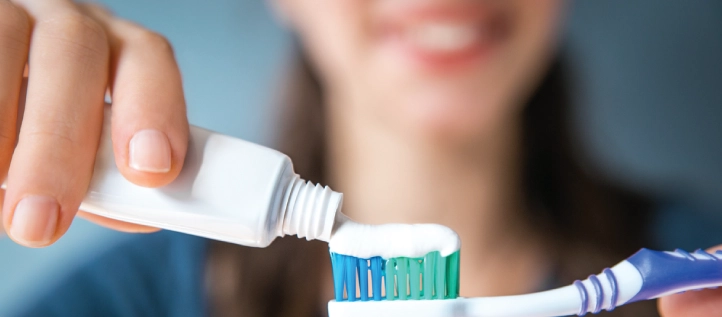Disinfecting Toothbrushes

Updated Jan. 2023
You use your toothbrush every day to thoroughly clean your mouth, but should you be making it a point to routinely disinfect your toothbrush? Will disinfecting your toothbrush help prevent the spread of colds or the flu? Is disinfection even really necessary, or is simply rinsing your brush enough?
A breeding ground for germs? Yikes!
It’s a little unnerving, but the tool that you use twice a day to clean your mouth of bacteria might actually serve as a breeding ground for bacteria as well. That’s because some of the germs that you remove from your mouth through brushing might remain on the brush even after you’ve rinsed it off with water. Bacteria and viruses that could lead to the colds and the flu may make their home on your toothbrush, which is why some experts recommend disinfecting your brush just once a week as a precaution.
However, the American Dental Association (ADA) has determined that there really isn’t enough clinical evidence to prove that the bacteria that could grow on your toothbrush will result in systemic health problems or oral health problems. So, according to the ADA, it isn’t necessary to spend the time sanitizing your toothbrush (hooray!), and there aren’t any commercial products on the market that could completely sterilize your toothbrush either.
First steps to reducing bacteria on your toothbrush
Despite what the ADA has to stay about disinfecting toothbrushes, you might be wondering how using the same brush for an extended period of time without cleaning it stays clean.
Like a lot of people, you might want to take steps to at least reduce the bacterial load on your brush, and there are some really easy ways to do just that.
It all starts with understanding how the bacteria on your toothbrush grow in the first place.
How can germs survive on your toothbrush?
Well, bacteria prefer environments that are moist, dark, and warm, so if you store your brush in a closed container or you keep the brush covered, it’s more likely to have more bacteria on it. As an alternative, you could set your toothbrush upright in a holder where the bristles will be allowed to air dry completely. Ensuring that the bristles aren’t in contact with other toothbrushes could also help.
Disinfecting your toothbrush in a few easy steps
Now that you know how to store your toothbrush properly, here are some other steps that you can take to clean your brush in between replacements (it’s a good idea to replace your toothbrush every three to four months):
- Rinse the brush thoroughly under warm or hot water before and after every brushing. Don’t rush this step; otherwise, food particles could remain in the bristles and lead to bacterial growth. Gross! In fact, you could even use your finger to move the bristles around and let the water really get in there to rinse debris and excess toothpaste away.
- Place some antibacterial mouthwash into a small cup so you can soak your toothbrush in it for about 15 minutes (any longer and you risk damaging the bristles). If you don’t want to use mouthwash, you could also try hydrogen peroxide. Discard (don’t reuse) the cleaning solution when your brush is done soaking.
- Place your toothbrush in boiling water for about three minutes. Just be aware that, even though the hot water could help kill germs, it might also do some damage to the brush itself.
Tip: You might have heard that you could disinfect your toothbrush by putting it in the microwave, in your dishwasher, or in a special device that will shine UV light on the bristles. But the Centers for Disease Control and Prevention (CDC) doesn’t recommend these tactics, as they could cause too much damage to the brush.
Extra tip: If you’re sick with an infection, or if you have a compromised immune system, you might opt to disinfect your toothbrush, as well as replace it, more often than usual.
Toothbrush cleanings + professional cleanings = Healthy mouth!
So there you have it: disinfecting your toothbrush could be a good idea, but you don’t have to go overboard with it. A few simple and affordable tricks will help you keep those bristles cleaner, whether you use a regular toothbrush or an electric toothbrush.
And when you disinfect your toothbrush weekly and see your dentist every six months to have your teeth cleaned and examined, you could rest assured that you’re doing what you can to keep your oral health intact.
If you're currently shopping for a stand alone dental plan, Spirit offers up to three cleanings per year to keep your mouth even healthier. Find your Spirit dental plan today!
Sources:
- https://www.colgate.com/en-us/oral-health/brushing-and-flossing/do-i-need-a-toothbrush-sanitizer
- https://www.dynamicdentalinc.com/blog/bid/79338/Cold-and-Flu-Season-5-Ways-to-Disinfect-Your-Toothbrush
- https://health.howstuffworks.com/wellness/oral-care/products/how-to-disinfect-toothbrush.htm
- https://www.breathmd.com/how-to-clean-and-store-a-toothbrush.php
